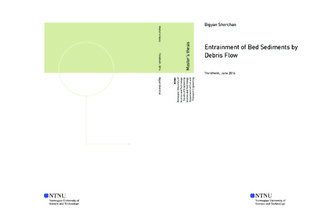| dc.description.abstract | Debris flows have proved to be a major worldwide hazard for more than 100 years owing to the destruction of lives, property and infrastructures. This occurrence of debris flows is likely to increase in the future due to the impending climate change. The large runout distance of the debris flow due to its ability to entrain materials along its way is one of the main causes for destruction.
The objective of this study was to research the mechanism of entrainment in debris flows and to investigate the different methods that can be used for debris flow modelling. While empirical methods are mostly used to model debris flows due to their simplicity, numerical methods can be advantageous in representing debris flows with more accuracy. Literature study was carried out on the existing attempts to include entrainment in these methods and it was found that the mechanism of entrainment is not fully understood and hence used in terms of empirical coefficients or user defined entrainment rates. RAMMS was used for the numerical modelling of debris flows and a detailed explanation of the software and its governing equations was presented.
Two debris flows, one of a physical model prepared in the laboratory and another of a real event in Almåskroken, Sør-Trøndelag were back calculated using RAMMS. These events were first used for the calibration of the input parameters applying the Voellmy rheology followed by the sensitivity analysis of the calibrated input parameters. RAMMS was able to replicate the runout distance of the physical model and the Almåskroken debris flow. The runout distance was found to be most sensitive to the friction coefficient μ, followed by the turbulent coefficient ξ. Entrainment was included in the simulation of the real case event. While RAMMS was not completely successful to simulate the final deposit volume, the volume of eroded materials was most sensitive to the entrainment coefficient K used in RAMMS.
Thus RAMMS can be a useful tool to for numerical modelling of debris flows due to the applicability of its Voellmy rheology to debris flows but for a complete understanding of the entrainment mechanism, more theoretical study and laboratory experiments are essential. | |

